|
|
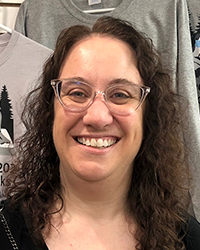 Jen Jen
|
|
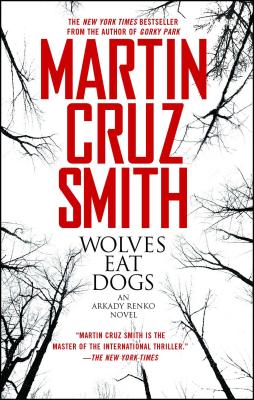
|
|
Wolves Eat Dogs
Martin Cruz Smith
 A friend gave me Wolves Eat Dogs (the Arkady Renko Novels #5) for my birthday. The first book in the series is the well-known Gorky Park. A friend gave me Wolves Eat Dogs (the Arkady Renko Novels #5) for my birthday. The first book in the series is the well-known Gorky Park.
While it’s book #5 in a series, I didn’t have any trouble jumping right into the story. I have a sort of semi-serious interest in the Chernobyl incident that took place on April 26, 1986, which happened to be my 11th birthday. In Wolves Eat Dogs, Detective Arkady Renko is investigating the death of a Russian billionaire and the investigation takes him to the Zone of Exclusion around Chernobyl. It’s a good mystery with good characters and an interesting perspective on world events, since the events in the book take place in Russia/Ukraine/the USSR.
|
| |
|
 |
|
The Cradle of Ice
James Rollins
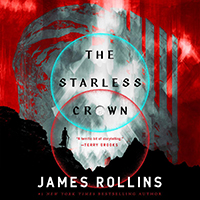 I’ve been listening to The Cradle of Ice audiobook. This is the 2nd book in Rollins’ Moonfall Trilogy. The fellowship that was formed in book one, The Starless Crown, has now split up to accomplish their shared goals. I’ve loved being back in the world of Moonfall and all its characters. The narrator of Starless Crown also narrates Cradle of Ice and does an excellent job. If you’re a fan of fantasy books, I highly recommend this series! I’ve been listening to The Cradle of Ice audiobook. This is the 2nd book in Rollins’ Moonfall Trilogy. The fellowship that was formed in book one, The Starless Crown, has now split up to accomplish their shared goals. I’ve loved being back in the world of Moonfall and all its characters. The narrator of Starless Crown also narrates Cradle of Ice and does an excellent job. If you’re a fan of fantasy books, I highly recommend this series!

|
| |
|
|
|
|
|
|
| |
|
|
|
|
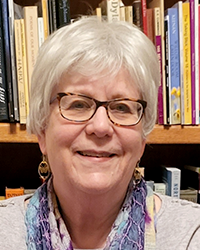 Sally Sally |
 |
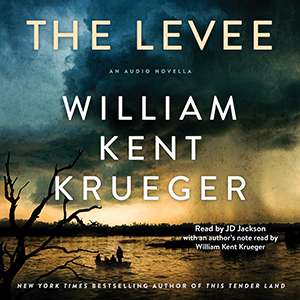
|
 |
The Levee
William Kent Krueger
 Here’s something to keep you going until William Kent Krueger’s new book, The River We Remember, comes out on September 5. (And keep in mind that Krueger will be with us on September 2 and you can get your copy then.) Here’s something to keep you going until William Kent Krueger’s new book, The River We Remember, comes out on September 5. (And keep in mind that Krueger will be with us on September 2 and you can get your copy then.)
The Levee is a novella which is only available as an audio book. (Sorry, but talk to us about Libro.fm) William Kent Krueger worked on it off and on for years. You’ll want to listen to his account of the genesis of the book at the end of the audio book.
The Levee is set during the devastating flood of the Mississippi in 1927. Four men are on the dangerous river in a small rowboat, heading toward an estate known as Ballymore. Three of the men are convicts, sent from the local prison. They are under the direction of the fourth man, whose motives are slowly revealed. Ballymore is surrounded by a high levee and not everyone there feels they are in need of rescue. Suspense and tension are high throughout the story as the level of the water, and the danger, increase, Relationships between those within the levee are complicated, and revealed slowly.
Will the levee hold? Will those within it survive?
It’s a great story, and one every Krueger fan will want to hear.

|
| |
|
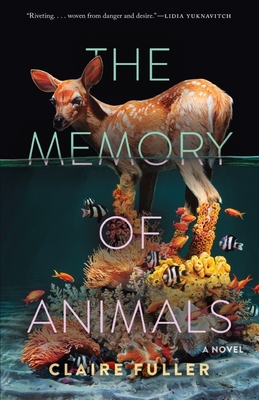
|
|
The Memory of Animals
Claire Fuller
For the most part, many of us no longer mask and we’re no longer under lockdown. We know COVID is still with us because we’ve had it recently or someone we know has, but the level of our concern has receded. At the same time, we’ve been warned that more pandemics are ahead. Enter Claire Fuller, whose latest book, In Memory of Animals, is a richly imagined story of such a pandemic. This pandemic is extremely contagious, fast moving, and deadly. Neffy, a twenty-seven-year-old marine biologist has entered an experimental trial for a vaccine. She and several other volunteers will be isolated in a facility in London, given the vaccine, and exposed to the virus.
As the trial proceeds, life outside their facility descends into chaos. The volunteers are abandoned by the staff, and some volunteers leave as well. With only themselves to rely on, the five remaining volunteers struggle to form a community while not willing to completely trust one another. Leon, one of the volunteers, has brought with him an untested technology which allows some people to revisit their memories. Although it doesn’t work for most people, it does for Neffy, and we learn her back story through her Revisits.
The book explores the lengths humans will go to survive, how we make meaning in the face of unimaginable loss, and the ways in which we are connected to one another as well as to the natural world.
The book is a page-turner, and the story will stay with you long as you’ve turned that final page.
 Note: this book will be released June 6. Note: this book will be released June 6.
Sally met Claire Fuller at a recent conference.
|
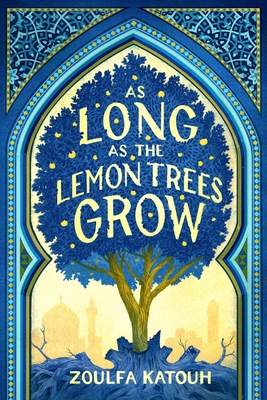
|
|
As Long as the Lemon Trees Grow
Zoulfa Katouh
One of the benefits of reading is that it takes us out of our own lives and exposes us to people and places we’re unaware of. That was the case with this book, which is set during the Syrian Revolution. When the Revolution began, Salama Kassab was a pharmacy student. She lived with her parents and older brother, and her life continued more or less in its normal way. A few months later, all that had changed. Her city was under siege, her father and brother had been arrested for revolutionary activity, her mother died during shelling. Their home was destroyed, so Salama moved in with her sister-in-law, Layla, and volunteered at the local hospital. Medical help was so desperately needed that this eighteen-year-old girl functioned as a surgeon, treating waves of injured people seeking help. Struggling with PTSD, she was torn between leaving the country she loved or staying in a deteriorating situation and with moral dilemmas. It sounds bleak, doesn’t yet? And yet, it’s not. Salama has amazing resilience. The author says she wrote the book with hope on every page.
The book is actually a young adult book, but the adult women in the Sister Wolf Book Group had a rich discussion of it. Our world was broadened as we were exposed to current events we were largely unaware of.
|
|
|
| |
|
|
|
|

Ann |
|

|
|
Beyond That, the Sea
Laura Spence-Ash
Like many British parents, Reginald and Millie made the difficult decision to send their daughter to America where she would escape the dangers of World War II. Beatrix spends the war years in Maine with Ethan and Nancy Gregory and their sons, William and Gerald. In time, she becomes accustomed to life in America and feels like part of the family. After the war, Bea returns to England and attempts to make a life for herself. Though she tries, she can't entirely give up her American way of life. Beyond That, the Sea is a quiet, character-driven story. It takes place over four decades and is told from the points of view of eight characters. It is an engaging story filled with love, loss, disappointment, and determination. I enjoyed learning more about this part of history and getting to know these unique characters. |
|
|
| |
|
|
| |

Bob |
|
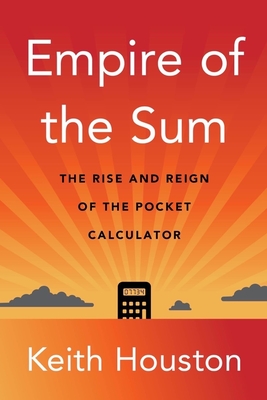
|
|
Empire of the Sum: The Rise and Reign of the Pocket Calculator
Keith Houston
Well, the title of this book certainly points me out as the NERD of the staff at Beagle and Wolf. Nonetheless, I admit I have a solid connection with this book’s topic. When I came back from the Army in 1972, I re-enrolled at the University of Oklahoma’s School of Engineering. The first day of class, I arrived fully prepared with my trusty slide rule at my side. I was soon informed I better get a “Calculator” if I wanted to compete. After forking over what was a huge amount of money at the time, I had a Pocket Calculator (PC) that performed four functions; Add, Subtract, Multiple and Divide and the slide rule was history.
Interestingly, I’m typing this review on my new tablet, an off shoot of my first pocket calculator and the topic of this book. The book provides a ton of background material that goes back…..way back to the Paleolithic era, supporting the idea of human ability to count and store their findings on their “calculator”….a notched stick. By the way, it appears that our Base 10 counting system is a function of having 10 fingers.
As you will see, there have been a lot of counting/calculating devices developed over the years (which includes the old telegraph system……really.) The author does a superb job transitioning among all these devices. What’s even more remarkable are the photos of quite a few of them, some of which were hand-made. They were really old and only a few were fabricated at the time. I was quite a ways into the book before I started to recognize company names and calculator model numbers.
This is a great well-written book for NERDs and regular folks alike.
Note: the book will be released August 22 and may be pre-ordered now.
|
|
|
| |
 |
 |
 |
|
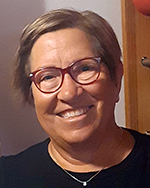
Doni
|
|
 |
|
West with Giraffes
Lynda Rutledge
This coming-of-age tale is related from the vantage point of 105 years. As his life nears its end, Woody Nickel is compelled to tell his story; that of a 17-year-old orphan from the Dust Bowl that is 1938 panhandle Texas. He travels to the East Coast to live with his only remaining relative, who is killed in a hurricane soon after he arrives. What does survive the hurricane are two giraffes, transported from Africa and destined for the San Diego Zoo.
Woody is determined to get to California and sees the giraffes as his ticket there. What follows is a recounting of their 12-day trek across the country, the road to “The Promised Land,” and the people they meet along the way. Like the other major characters, Woody has a secret, and they are woven into the story and impact the outcome of the story.
Based on actual events, the book made me feel as if I was traveling across the country during the time of the depression and the days leading up to World War II. The illustration of the “Okies” on the road and Hoovervilles reminded me of The Grapes of Wrath and its depiction of the desperation of the times.
|
| |
|
 |
|
Soil: The Story of a Black Mother’s Garden
Camille R. Dungy
Poet Camille Dungy wanted to write about her garden. In actuality, she wrote a memoir with her garden as the framework for her meandering thoughts. Written during the pandemic, Dungy’s story reflects much of the fear, isolation, and frustration that many of us experienced during those unprecedented times.
Dungy digs deep into the history and current state of the systemic racism that is so prevalent in her life. She describes her life in academia and as a black published author as well as the events of our times, focusing on black deaths at the hands of the police.
Upon moving to Fort Collins, Colorado, she dug up her lawn in defiance of her neighborhood HOA. Her dream was to create the Prairie Project, her name for her evolving garden. She talks about her plants with joy and love and compares her writing about the Prairie Project to nature writing. She plants mostly native plants and returns often to the importance of diversity in creating a vital community, whether human or botanical.
I am a gardener, and I loved her gardening stories. I am a white woman and value her insight into the impact that racism has had on our country since slavery was first introduced. This was one of my favorite reads of the year! |
|
| |
|
|
|
|
|

Hannah
|
|
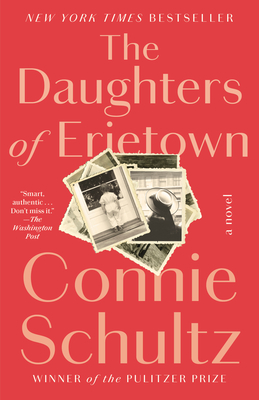 |
|
The Daughters of Erietown
Connie Schultz
Connie Schultz, (wife of the Ohio Senator Sherrod Brown!) has won a Pulitzer Prize for journalism and has published two memoirs, but this is her first novel. And what a novel it is. She paints portraits of denizens of a small, midwestern town, tracing a few generations of a couple of farm/working class families and how people grow, forgive or not, grow apart and together and in themselves. I love this book. But I don’t understand the title as I feel that Brick, son/husband/father, is central to the novel. He is breathtakingly human. And he is definitely not a daughter in any way.
|
| |
|
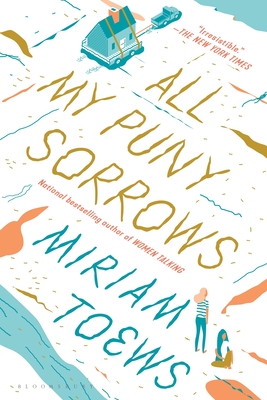 |
|
All My Puny Sorrows
Miriam Toews
In the first chapter of All My Puny Sorrows a family of delightful characters, by nature free spirits, are repressed by their Mennonite community. I thought it was going to be all about that time and place, especially since Toews is the author of Women Talking. However, the book soon jumps about 30 years. The point of view is from the younger of two sisters, who has a rather chaotic life. The elder sister, a world class concert pianist, is in crisis. Their mother is trying to cope. This is a book about their love, and it's a book about suicide and the trauma it causes and is caused by. It’s both a tragic story and one of the funniest books ever. The writing hits you like a sledgehammer, evoking the way a clever, imaginative person dealing with prolonged crises must think.
This isn’t a memoir, but the main characters and events are a retelling of Toews’s actual life. I should have been doing other things the day I read the last 100 pages, but I simply could not put the book down. |
| |
|
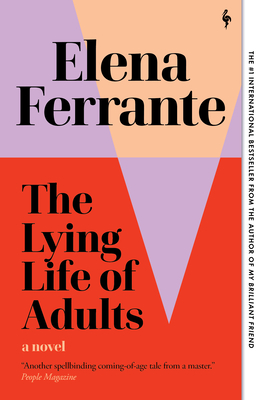
|
|
The Lying Life of Adults
Elena Ferrante
The first sentence of this Italian coming-of-age novel knocked me over: “Two years before leaving home my father said to my mother that I was very ugly.” Until fourteen-year-old Giovanna overheard this, she had a wonderful relationship with her professor father. He was affectionate and amusing, and with her mother they made a charming, sweet little family. However, Giovanna was starting to feel anxiety that made her face change, to be more like her estranged aunt Vittoria. Giovanna decides she must meet Vittoria, her father’s enemy, to see what her face is like. And Vittoria does a head trip on her niece that leaves her confused and much more unnerved.
What are the odds that a teenager will be unscathed by being exposed to the duplicity inherent in the way adults present themselves to children? The ending of the book stunned me more than the opening line. |
|
| |
|
 |
|
|
|

Lee |
 |
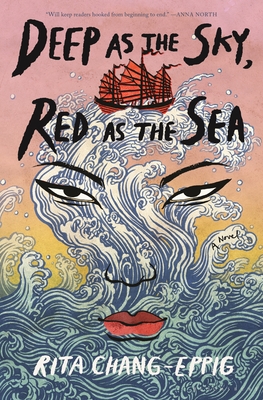
|
 |
Deep as the Sky, Red as the Sea
Rita Chang-Eppig
This novel is a fictionalized narrative relating the story of Shek Yeung, a feared Chinese pirate of the late 1700s and early 1800s. Her first husband, a pirate, had found her working in a brothel. They forged a strong relationship that involved shared leadership of the pirate fleet. Upon his death, she moved quickly to forge an alliance with her first husband’s other heir.
The fleet she co-commanded with this heir, her second husband, consisted of hundreds of ships and tens of thousands of hands. Not only did they attack the ships and villages of the Emperor, but they also took on the Europeans in the area.
For her to project authority and leadership, she was a calculating, fearless, and ruthless leader. (Ruthless? Yes. She places stacks of heads on pikes to remind her crews how deserters or traitors would be treated.)
Even so, there was a bit of humanity (and even softness) for close friends, her second husband, and her third child.
I am sure this book is not for everyone, but it is an incredible tale of a pirate who was a complete unknown to me.
|
| |
|
 |
|
August Blue
Deborah Levy
Elsa M. Anderson, a world-renowned pianist in her thirties, gets up in the middle of a performance and walks off the stage.
In Athens, she sees a woman who seems to be – perhaps -- her doppelgänger buy a pair of mechanical dancing horses. Elsa wishes to also buy a pair, but there are no more. The woman who purchased the horses does, however, drop her trilby hat, which Elsa picks up and begins wearing.
Elsa travels Europe, meeting up with old friends and acquaintances, pausing a couple times to provide private lessons to children.
The key word here is “enigmatic” ... both in terms of Elsa and the other characters, but also in terms of the theme of this novel. She is trying to find the motif that can bring together the disparate parts of her life ... orphan, foster child, child prodigy, virtuoso pianist, and now a refugee of sorts.
If you are looking for a nice, clean storyline that has clearly defined characters and plot, this is not at all for you, but it is a fascinating read. I loved it.
Note: this book will be released June 6.
|
|
| |
|
| |
|
|
|
|

Tim
|
|
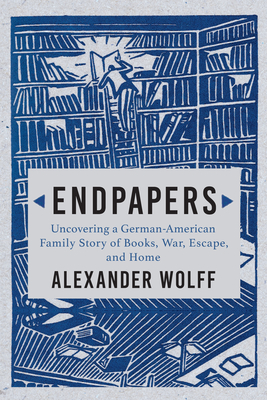
|
|
Endpapers
Alexander Wolff
For those of us who have families with ties to Europe, there are situations and events that require careful handling, or that the family has learned to abide with. These memories needing "Special Handling" very often are tamped down, sequestered, and unmentioned in the hopes of sparing the pain of being remembered or, to spare the later generations being brought to the knowledge of something best forgotten. Endpapers is such a book. Wolff's grandfather immigrated to the US in the 1930's, while his father remained in Germany for the whole of the war. Indeed, his father was (as most were) an active participant. After 1945, his father joined his father here in the US, married and had a family. Wolf's book is the story of his research into the reasons and events for this odd scramble in his family's history. It's gut wrenching, and extremely well written.
|
| |
|

|
|
The Postcard
Anne Berest
In 2003 a postcard arrives listing the four first names of family members who perished in the European Death Camps. A father, mother, son and a daughter. The recipient of the card was another daughter. Anne Berest is the recipient's daughter. The card has no return address, no message, and is judged to be odd, uncomfortable, and is put in a drawer and forgotten..... but subliminally remembered. Thirteen years later, Anne begins the seemingly impossible quest of determining the card's origin, as well as why it was sent. Alongside this story is the more interesting theme of how all of these people have adjusted and coped in their various ways, to what's happened to them. This book and the one I've mentioned above (Endpapers) are very similar. I didn't intentionally choose to read them for that reason, however, the startlingly similar subject matter and 'search for meaning and resolution' in them, provided an added interest. What came as a complete surprise was the way the contrasting elements added to the richness of both.
Hear the author talk about the book.
"If we want things to stay as they are, things will have to change."
|
| |
|
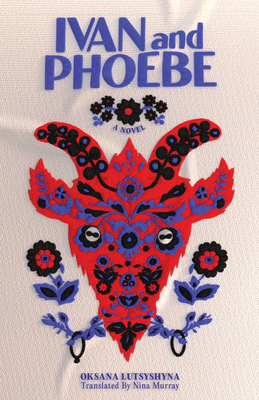 |
|
Ivan and Phoebe
Oksana Lutsysyna
We're all aware, to varying degrees, of the war in Ukraine. I’ve watched, fascinated by the determined resolve of the Ukrainian population, to risk everything in order to gain their independence and free their land from Russia. What had been their experience under Russian influence for these long years past? I honestly couldn't tell you. Ivan and Phoebe takes place in the early years of Ukrainian independence, and I think gives a good feel for the residual effects of that long period of Russian domination. It's one of the first books I've read written by a Ukrainian author. Lutsysyna has given a firsthand insiders description of what that trauma looks and feels like. How it permeates the thinking of that population, and how they cope. It's a story of young people coming of age, discovering the possibilities for their lives, as well as their self-doubting limitations. It was an eye-opening read. As well as making clear why they will not go back!
Note: this book will be released June 20
|
| |
|
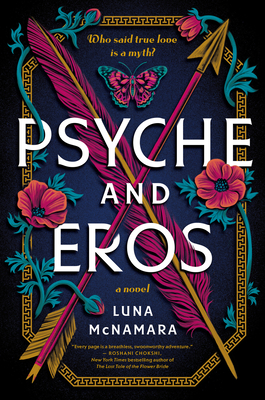
|
|
Psyche and Eros
Luna McNamara
These past few days of cold weather have made me think that Boreas, god of the frigid north wind, has been reluctant to leave Minnesota. (Note: Tim wrote this in April.) During these last cold days, I've been entertained by McNamara's retelling of the love affair between Eros (god of desire, sometimes called Cupid) and the mortal Psyche (who later becomes the god of the human soul). It's the ultimate Romeo and Juliet myth, but with a happy ending. McNamara says, "Myths are not written in stone. They are organic, evolving structures constantly being adapted to new circumstances and cultures.” They also provide endless opportunities to examine our reactions to events in the stories that may be similar to the events in our own lives. With the hope that we will gain perspective and context. Luna McNamara does all of this on an epic scale.
Note: this book will be released June 13
|
|
|
Would you like to be a guest reviewer?
Email Sally at sally@beagleandwolf.com |
| |
|
|
|
|
|
— page top —
|
|

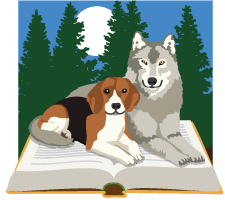



 Sally
Sally














 A friend gave me Wolves Eat Dogs (the Arkady Renko Novels #5) for my birthday. The first book in the series is the well-known Gorky Park.
A friend gave me Wolves Eat Dogs (the Arkady Renko Novels #5) for my birthday. The first book in the series is the well-known Gorky Park.  I’ve been listening to The Cradle of Ice audiobook. This is the 2nd book in Rollins’ Moonfall Trilogy. The fellowship that was formed in book one, The Starless Crown, has now split up to accomplish their shared goals. I’ve loved being back in the world of Moonfall and all its characters. The narrator of Starless Crown also narrates Cradle of Ice and does an excellent job. If you’re a fan of fantasy books, I highly recommend this series!
I’ve been listening to The Cradle of Ice audiobook. This is the 2nd book in Rollins’ Moonfall Trilogy. The fellowship that was formed in book one, The Starless Crown, has now split up to accomplish their shared goals. I’ve loved being back in the world of Moonfall and all its characters. The narrator of Starless Crown also narrates Cradle of Ice and does an excellent job. If you’re a fan of fantasy books, I highly recommend this series!
 Here’s something to keep you going until William Kent Krueger’s new book, The River We Remember, comes out on September 5. (And keep in mind that Krueger will be with us on September 2 and you can get your copy then.)
Here’s something to keep you going until William Kent Krueger’s new book, The River We Remember, comes out on September 5. (And keep in mind that Krueger will be with us on September 2 and you can get your copy then.) Note: this book will be released June 6.
Note: this book will be released June 6.







